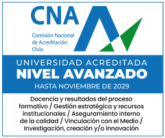There is currently a context of climate change due to the way modern cities are developed, and they are made up mainly of impermeable surfaces and concrete buildings that change the hydrological cycle, causing (i) an increase in temperatures, (ii) the accumulation of stormwater on different surfaces, (iii) overflow in drainage systems, and (iv) the alteration of ventilation patterns, among others. This article presents a case study on the implementation of a permeable interlocking concrete paving (PICP) system, and it develops physical–mathematical modeling using software for the design of a parking lot that currently does not have adequate paving and urban drainage, resulting in sporadic flooding due to heavy rainfall in the city of Temuco, La Araucanía region, Chile. This article’s contribution highlights the application of new technology in Chile, discussing road infrastructure solutions based on sustainable urban drainage systems (SUDSs), which seek to implement feasible alternatives in urban sectors to improve human livelihood. The factors studied include structural and hydrological properties, along with the infiltration analysis of the system according to historical rainfall records in the area. This research concludes that the permeable pavement system with a drainage pipe and smooth roughness coefficient performs satisfactorily for an extreme hydrometeorological event corresponding to 140 mm considering 24 h of rainfall with a return period of 100 years equivalent to an inflow of 673 m3/day. Finally, the results indicate that, at least in the conditions of the city of Temuco, the use of permeable interlocking concrete pavement (PICP) proves to be a sustainable and feasible alternative to implementing measures of adaptation and mitigation against climate change, reducing the city’s flooding zones and allowing the irrigation of urban green areas.



